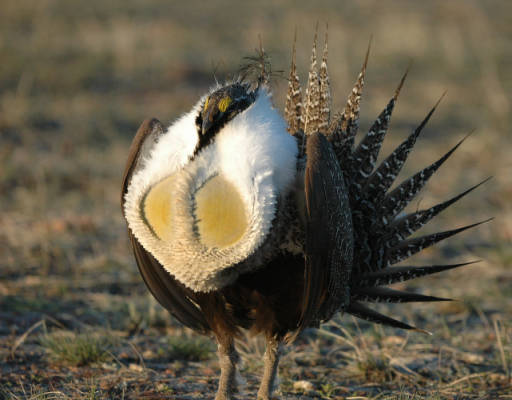We have much more to do and your continued support is needed now more than ever.
New Methane Rule Advances Climate Action, Protects Wildlife
Today, August 18th, the Environmental Protection Agency (EPA) proposed critical new performance standards to limit methane pollution from the oil and gas industry, our nation’s largest emitter of this pollution. The rule will help tackle climate change and have both immediate and long-term benefits for wildlife.
The EPA’s proposed rule calls for the reduction of methane emissions by 40 to 45% from 2012 levels by 2025. It will require reductions of methane from new and modified oil and gas production sources as well as “downstream” sources from natural gas transmission and processing equipment.
This rule comes on the heels of EPA’s recently released landfill and voluntary methane regulations and is an exciting and important next step in the Administration’s plan to reduce methane pollution, a key piece of the President’s Climate Action Plan. It will also complement yet-to-be proposed methane rules coming out of the Bureau of Land Management, regulating methane waste from gas operations on public lands. Strong methane rules will have huge benefits for our climate, clean air, and wildlife!

Protection for Pronghorn, Other Western Wildlife
Methane is a potent greenhouse gas that traps more than 80 times as much heat as CO2 over a 20 year time period, meaning a small amount of pollution can have big impacts on climate.
Methane pollution poses threats to wildlife through climate change, air pollution, and expanded development on critical habitat. Energy development has been tied to decreasing populations of species like black-tail prairie dogs, sage grouse, pronghorn, and mule deer. Oil and gas development in the West is already fragmenting critical pronghorn habitat with roads and fences, but an added danger is the release of incredibly potent methane pollution into the air that fuels climate change and increases ground-level pollution.
In addition to cutting climate-warming methane emissions, the new standards will simultaneously curb emissions of nitrogen oxides (NOx), volatile organic compounds (VOCs), and carcinogens like benzene, protecting both public health and wildlife. VOCs and NOx can lead to the production of ground-level ozone and smog which reduces visibility in outdoor spaces and can lead to respiratory complications.
Preventing Waste is a No-brainer
EPA’s proposal is a common sense and achievable measure that will make significant progress in curbing short-term climate and air pollution. Much of the methane pollution from oil and gas industry is wasted through intentional venting or flaring into the air, or lost to the atmosphere because of sloppy practices and equipment. The oil and gas industry releases enough unburned methane per year to heat 6 million homes.
Cutting methane can be achieved in a cost-effective, efficient manner using existing technologies that often pay for themselves in a matter of months. In many cases, it simply means preventing leaks to capture more of a useful product (natural gas). EPA’s proposal saves a valuable resource while reducing emissions that harm wildlife and outdoor enthusiasts by causing ground level smog and fueling climate change.

A Promising Follow-up to EPA’s Carbon Rule
EPA’s rule for new and modified sources of methane pollution is vital to securing the climate benefits of the EPA’s Clean Power Plan, which put first-ever limits on carbon pollution from existing power plants. Because increased reliance on energy from natural gas is one of the options states can use to comply with this plan, these limits on methane pollution are critical if the Clean Power Plan is to deliver the intended climate benefits by ensuring natural gas use is as clean as possible. This methane rule is expected to flatten the expected increase in emissions from new oil and gas sites.
This rule also leaves the door open for stronger methane rules down the line, namely, regulating existing oil and gas sources of methane as well. Curbing methane pollution is an achievable step towards reducing the impacts of energy development, resulting in a triple win for wildlife, habitat, and climate. We look forward to a strong final rule!
![]() Let the EPA know that you support their action to curb methane pollution!
Let the EPA know that you support their action to curb methane pollution!





















